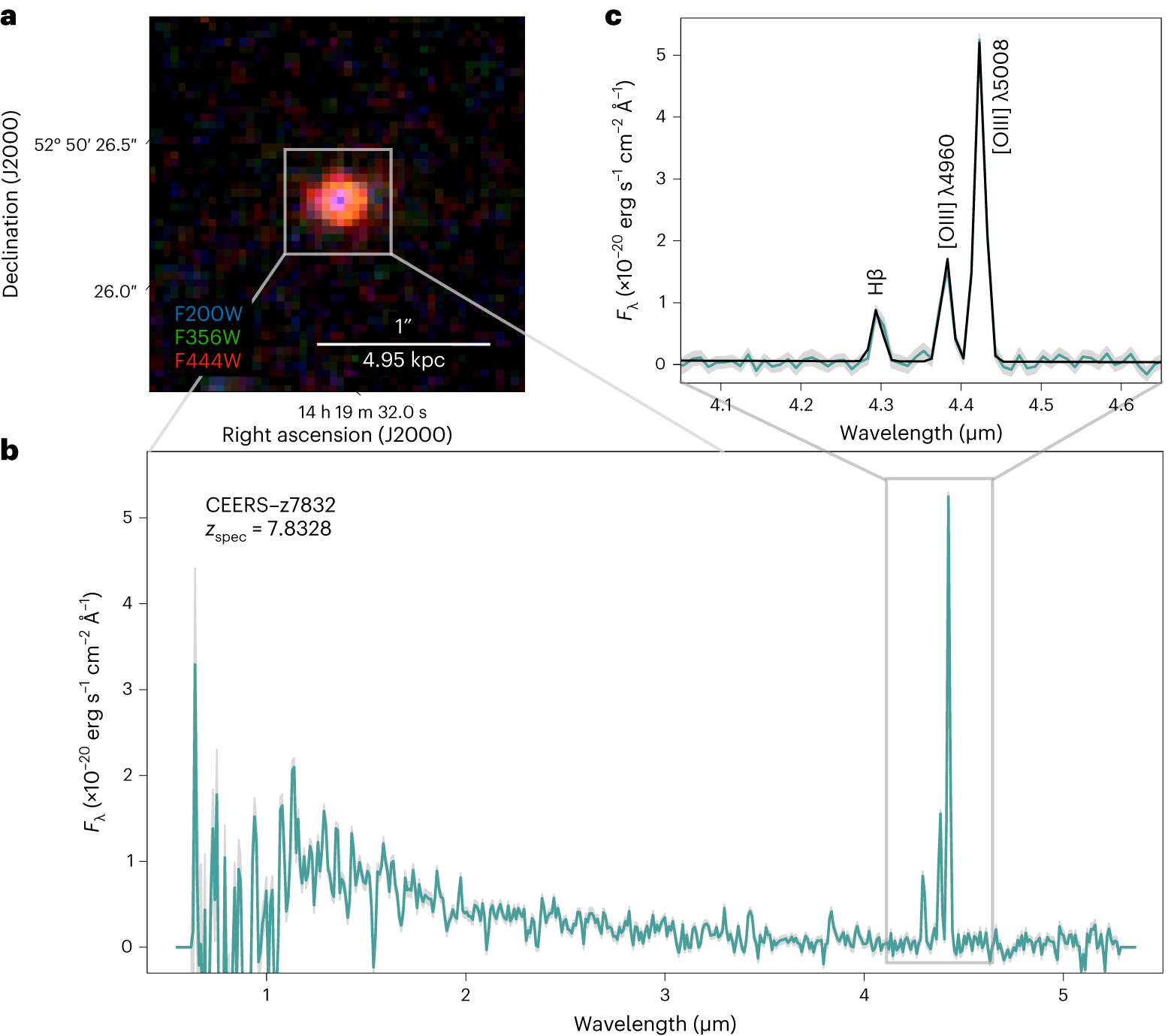James Webb Space Telescope Feed Post
CEERS-z7382: Dilution of chemical enrichment in galaxies 600 Myr after the Big Bang
Photometric and spectroscopic data of CEERS-z7382. Panel (a): Falsecolor JWST/NIRCam RGB image zoomed in on the example galaxy (blue: F150W; green: F277W; red: F444W). The image scale and corresponding physical size at z = 7.8328 is marked as well. Panel (b): Full NIRSpec/prism spectrum covering 0.7µm to 5.2µm (cyan) and associated error spectrum (grey). Panel (c): Zoom-in on the spectral region covering the nebular emission lines from the [O iii] ??4960, 5008 doublet and Hß. The local best-fit line and continuum model is shown by the black curve. Abstract: The evolution of galaxies throughout the last 12 Gyr of cosmic time has followed a single, universal relation that connects star-formation rates (SFRs), stellar masses (M?) and chemical abundances. Deviation from this fundamental scaling relation would imply a drastic change in the processes that regulate galaxy evolution. Observations have suggested the possibility that this relation may be broken in the very early Universe. However, until recently, chemical abundances of galaxies could be measured reliably only as far back as redshift z = 3.3. With the James Webb Space Telescope, we can now characterize the SFR, M? and chemical abundances of galaxies during the first few hundred million years after the Big Bang, at redshifts z = 7–10. We show that galaxies at this epoch follow unique SFR–M?–main-sequence and mass–metallicity scaling relations, but their chemical abundance is one-fourth of that expected from the fundamental–metallicity relation of later galaxies. These findings suggest that galaxies at this time are still intimately connected with the intergalactic medium and subject to continuous infall of pristine gas, which effectively dilutes their metal abundances.
